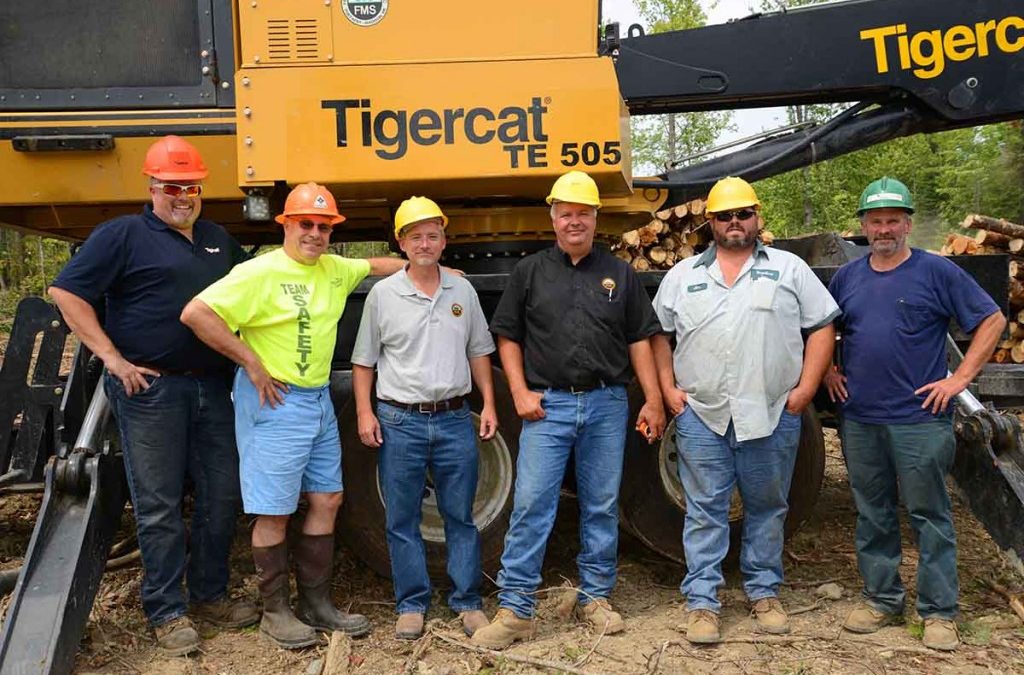Treeline’s Brian Souers talks about business, changing equipment requirements and his quest for parts commonality.
Based in Lincoln, Maine and owned by Brian Souers, Treeline, Inc. has an apt tagline on its website: “What don’t we do!?” Although Brian started off in the early eighties with a chainsaw, and the company is deeply rooted in Maine logging, over the last 30 years Treeline has grown into so much more. The company is involved in harvesting, forest management, timber buying, real estate, truck servicing and parts supply, as well as hauling and transportation services. Treeline also manages two wood yards for Verso and operates one of its own as well.
It wasn’t always like this of course. Armed with a technical degree in forestry, Brian started off as a forester in the late seventies, moving to Maine from New York State to take a job with International Paper as a tree marker. Brian recounts that this is the best he could do considering the state of the industry at that time. “I finished at the top of my class and sent out a hundred resumes. There was not much of a market for my skills.”
Brian also started logging on weekends – helping out contractors in the area – and this eventually led to the decision to leave International Paper to pursue contract logging full time. Brian began with an old International skidder, bought a horse and then progressed to a German-made miniature Holder skidder – sort of an ag tractor-skidder hybrid. He speaks fondly of this period in the evolution of his career. “I liked cutting by myself and never wanted to grow a business. I loved my life. I had low stress and low expenses and I really enjoyed what I was doing.” At this point Brian was mostly working on IP land. “I made a specialty of thinning but they were asking for 500 acres a year, not 100 acres.” (1 acre is approximately 0.4 hectares)
So the area manager at IP encouraged him to expand, buy more skidders and hire more help. Brian obliged, hiring several men and buying two more Holders but after a year or so IP shuddered the whole thinning program. Meantime, in addition to his contract thinning, Brian was already buying small tracts of timber. The Holders were not designed for production logging and they began to fail so Brian broke down and bought his first real cable skidder. “At least the interest rates had come down from twenty to ten percent,” he recalls. However, he was now making payments on all three machines and working alone again in hardwood tracts. To increase production, he began renting and eventually purchased a track feller buncher.
Throughout the eighties, even as the company continued to mechanize with feller bunchers and grapple skidders, Brian continued to utilize hand fallers. At one point he employed more than a dozen men for manual falling, skidding and preparing the trees for a truck mounted roadside delimber. “Every tree was butt measured. When my wife was not available totally, I would walk around with a tape recorder to record everyone’s production,” Brian recalls.
Production continued to ramp up and by 1992, Treeline was ready to reinvest. “But we didn’t know what technology to choose,” explains Brian. The question he was asking himself was not what he needed in 1992 but what the mills would want him to own in four years’ time. Because IP wanted all the delimbing done in-stand, Brian chose to go with a Hahn delimber. The delimber followed the feller buncher. Then swing boom skidders bunched and skidded the trees out. “After a year of using the Hahn, we started limbing in-woods on the trail with slide boom limbers and bunching the tree length wood for regular grapple skidders. We had to have extra-long boomed loaders on the landing to handle the many sorts, sometime as many as twelve. There was no biomass market back then, so there was no value in bringing the branches to roadside. Plus the landowners liked the smaller landings.”
To contrast those times to today, Brian estimates that half of the trees the company harvests are now destined for biomass and in general the stands are of much poorer quality. “Most of our cuts now are removing the inferior trees and leaving the best to grow.”
Follow the link below to read the rest of the article.
Article from Tigercat Publication – Between The Branches: https://www.tigercat.com/between-the-branches/btb-41-common-ground/

